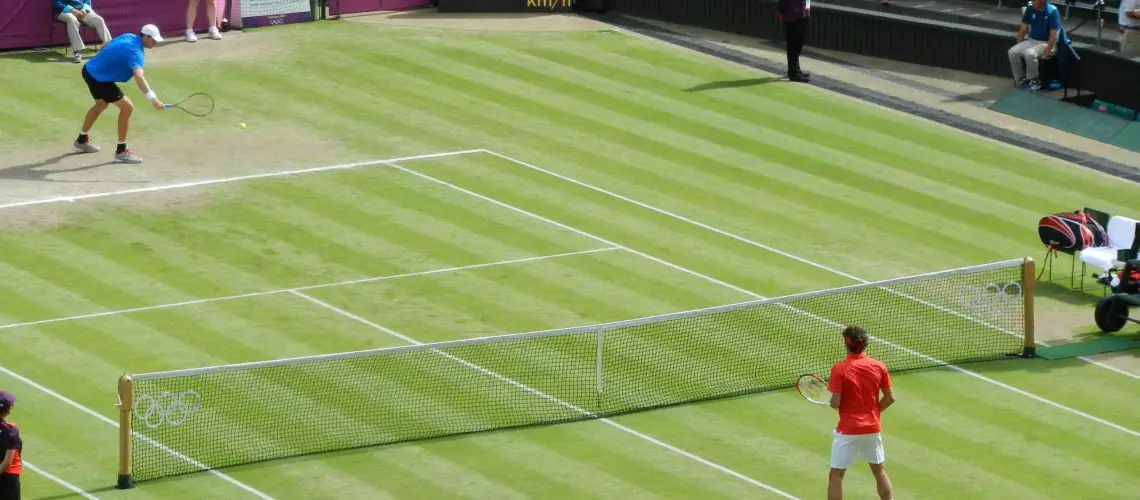We may earn money or products from the companies mentioned in this post.
Introduction

Tennis is a sport that requires not only physical prowess but also strategic decision-making on the part of the players The ability to make smart choices during a match can greatly impact the outcome and contribute to a player’s overall success One such strategic move in tennis is switching sides, which holds significant importance in the game In this article, we will explore the importance of strategic decision-making in tennis and delve into the significance of switching sides during a match
Importance of strategic decision-making in tennis
Strategic decision-making plays a crucial role in tennis, as it can heavily influence the outcome of a match Every shot, every movement, and every choice made on the court can have far-reaching consequences for both players involved By carefully analyzing their opponent’s strengths and weaknesses, players can make tactical decisions that give them an edge over their adversaries
Moreover, effective strategic decision-making directly contributes to a player’s success on the court It allows them to exploit their own strengths while capitalizing on their opponent’s weaknesses A well-thought-out strategy enables players to control the flow of the game, dictate play style, and ultimately secure victory
Significance of switching sides in tennis
In addition to overall strategic decision-making, switching sides during a match holds great significance in tennis This practice involves players changing ends of the court after an odd number of games or sets played There are several reasons why this switch occurs
One reason for changing sides is to ensure fairness and equal playing conditions for both competitors Tennis courts may have slight variations due to factors like wind direction or sunlight affecting one side more than the other Switching sides helps negate any potential advantage or disadvantage caused by these external elements
Another reason for switching sides is to break momentum In tennis, players can build momentum as they get into a rhythm on one side of the court By switching sides, the player who is trailing or struggling to find their groove gets an opportunity to disrupt their opponent’s momentum and potentially turn the tide of the match in their favor
However, there are also disadvantages to switching sides Players may have already adapted their gameplay to a specific side of the court, and changing ends can disrupt their rhythm and timing Additionally, some players may struggle with adjusting to different wind conditions or lighting angles on the new side
In conclusion, strategic decision-making is vital in tennis as it impacts both the outcome of a game and a player’s overall success Switching sides during a match holds significant importance in ensuring fairness, breaking momentum, but also poses challenges for players Understanding these aspects allows players to make informed decisions that can give them an advantage on the court
Factors Affecting the Decision to Switch Sides

When it comes to tennis, there are various factors that players consider when deciding whether or not to switch sides during a match These factors can have a significant impact on the overall game and can affect a player’s strategy and performance Let’s take a closer look at some of these factors:
Court Conditions and Weather Factors
The conditions of the court and the prevailing weather play a crucial role in determining whether switching sides is advantageous One factor to consider is the direction of sunlight or shadows on the court The position of the sun can affect visibility, making it harder for players to track the ball accurately Shadows cast by buildings or trees can also create uneven lighting conditions, further complicating matters
Additionally, wind direction and strength come into play Windy conditions can significantly impact how a player approaches their shots and strategies Adjusting playing style based on wind conditions becomes essential, as different tactics may be required when hitting against or with the wind Furthermore, during service games, players may choose to switch sides strategically to take advantage of favorable wind conditions
Player Preferences and Comfort Levels
Player preferences and comfort levels also influence decisions regarding switching sides One aspect that plays a role is a player’s dominant hand – whether they are right-handed or left-handed Right-handed players often prefer serving from the ad side (left side) due to better angles for their dominant forehand shots, while left-handed players might favor serving from the deuce side (right side). This preference stems from maximizing shot opportunities using their dominant hand
Pyschological factors come into play as well; adapting to different court environments affects confidence levels during matches Players may feel more comfortable playing from one side over another based on past experiences or personal superstitions Finding a rhythm and feeling at ease on a particular side of the court can enhance a player’s overall performance and mental state
In conclusion, factors such as court conditions, weather elements, player preferences, and psychological comfort all contribute to the decision-making process when it comes to switching sides in tennis matches Understanding these factors enables players to make strategic choices that can potentially impact their gameplay positively+
Rule-based guidelines for switching sides in tennis

In the game of tennis, there are specific rules in place regarding when and how players must switch sides during a match These guidelines ensure fairness and equal opportunities for both players or teams Let’s dive into the regular changeovers in standard match rules and the situations that require players to switch sides according to regulations
Regular changeovers in standard match rules
When it comes to regular changeovers, there are some differences between doubles and singles matches In doubles matches, both sets of partners will switch sides at each changeover, which occurs after every odd-numbered game However, in singles matches, the players switch sides only once during a set, at the end of the first game
The number of games played before switching also varies depending on whether it is a doubles or singles match In doubles, players switch every six games (after every third game), while in singles, they switch after every odd-numbered game until the end of the set
Situations when players must switch sides according to regulations
In addition to regular changeovers, there are specific scenarios when players must switch sides as per tennis regulations
1 Tiebreak scenarios: When a tiebreak occurs during a set, which usually happens when the score reaches 6-6, players have to switch sides after every six points played within the tiebreak This ensures fairness by balancing out any potential court advantages caused by wind or other factors
2 End of each set: At the conclusion of each set, regardless of whether it is a doubles or singles match, players must swap ends before starting the next set This allows both participants an equal opportunity to experience different court conditions
Strategies for effectively utilizing side switches during gameplay

In the fast-paced world of competitive gameplay, being able to adapt and strategize on the fly is crucial One such strategy that can give you an edge over your opponent is effectively utilizing side switches during gameplay By recognizing opponent weaknesses and adapting your own playstyle to changing court conditions, you can gain a tactical advantage Let’s explore some key strategies:
Recognizing opponent weaknesses when deciding when to switch sides
When it comes to switching sides during gameplay, one important factor to consider is recognizing your opponent’s weaknesses By analyzing their serving pattern, you can identify any vulnerabilities in their game Do they struggle with certain types of serves? Are they more comfortable with forehand shots than backhand? Understanding these weaknesses will help you determine the opportune moments to switch sides
Another aspect to capitalize on when deciding when to switch sides is the opponent’s backhand weakness If you notice that your adversary struggles with backhand shots or has difficulty returning them accurately, it may be advantageous for you to switch sides and exploit this vulnerability By strategically targeting their weaker side, you can put pressure on them and potentially gain control of the game
Adapting your own playstyle based on changing court conditions
The state of the court can greatly influence your gameplay strategy As court conditions change, it’s essential to adapt your own playstyle accordingly
One way to adjust your playstyle is by modifying serve techniques For example, if you notice that one side of the court favors spin serves while the other side benefits from powerful flat serves, strategically switching sides allows you to utilize each type of serve more effectively depending on where you are playing from
In addition, modifying return strategies based on court position is key Certain court positions may offer advantages for specific shots By switching sides strategically, you can position yourself favorably to execute powerful returns or take advantage of open spaces on the court
By effectively utilizing side switches during gameplay, you can keep your opponent guessing and gain a strategic advantage Recognizing opponent weaknesses and adapting your playstyle based on changing court conditions are crucial elements of this strategy So, the next time you step onto the court, consider incorporating these strategies into your gameplay and see how it enhances your performance
Useful Links

Can someone please explain the rules on changeovers
Tennis Rules on Switching Sides
Tennis Rules (The Extremely Easy Guide)
Tennis Rules and Etiquette Guidelines
The Rules of Tennis
Summary of Tennis Rules
How and When To Switch Sides During a Doubles Point
Rules of Platform Tennis
Table Tennis Rules Scoring
TENNIS RULES
Rules of Tennis | Wanless Park Tennis
When Do They Change Sides In Tennis at Loren Haycraft blog
The Rules of Tennis EXPLAINED (scoring, terms and more)
Rules & Scoring
Breaking the Rules: Making changes to the changeover
After a tennis tiebreak is done, do you always switch sides …
Beginners Guide to Tennis Terminology
Tennis | Rules and Equipment | Serve basics: changing ends
A Tennis Player’s Guide to Errors and Scoring Disputes
12-Point Tie-Break






